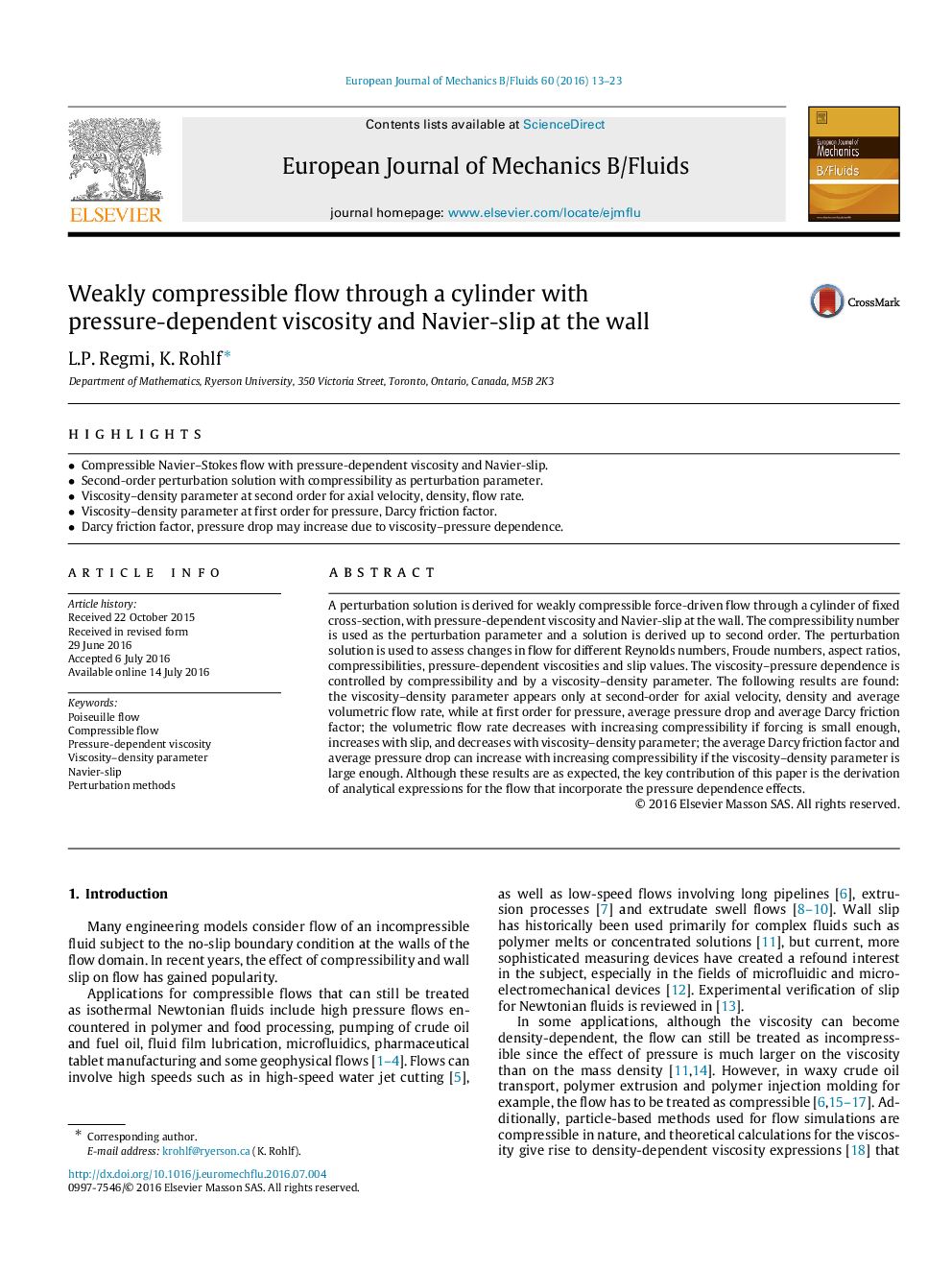| Article ID | Journal | Published Year | Pages | File Type |
|---|---|---|---|---|
| 650173 | European Journal of Mechanics - B/Fluids | 2016 | 11 Pages |
•Compressible Navier–Stokes flow with pressure-dependent viscosity and Navier-slip.•Second-order perturbation solution with compressibility as perturbation parameter.•Viscosity–density parameter at second order for axial velocity, density, flow rate.•Viscosity–density parameter at first order for pressure, Darcy friction factor.•Darcy friction factor, pressure drop may increase due to viscosity–pressure dependence.
A perturbation solution is derived for weakly compressible force-driven flow through a cylinder of fixed cross-section, with pressure-dependent viscosity and Navier-slip at the wall. The compressibility number is used as the perturbation parameter and a solution is derived up to second order. The perturbation solution is used to assess changes in flow for different Reynolds numbers, Froude numbers, aspect ratios, compressibilities, pressure-dependent viscosities and slip values. The viscosity–pressure dependence is controlled by compressibility and by a viscosity–density parameter. The following results are found: the viscosity–density parameter appears only at second-order for axial velocity, density and average volumetric flow rate, while at first order for pressure, average pressure drop and average Darcy friction factor; the volumetric flow rate decreases with increasing compressibility if forcing is small enough, increases with slip, and decreases with viscosity–density parameter; the average Darcy friction factor and average pressure drop can increase with increasing compressibility if the viscosity–density parameter is large enough. Although these results are as expected, the key contribution of this paper is the derivation of analytical expressions for the flow that incorporate the pressure dependence effects.
